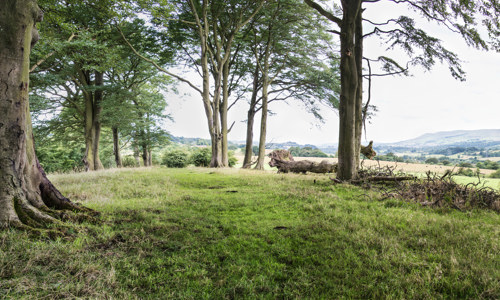History
Bloody lilies
One of Rough Castle’s most distinctive features is the group of lilia (lily) pits to the north of the fort. Lilia pits were a defensive measure – each pit would have been fitted with a sharpened stake, pointed upright and hidden among brushwood. The pits would have served to break up attacks from the north before they reached the fort.
Anatomy of a fort
Rough Castle was subject to excavations in the early 1900s, which identified several buildings within the fort. These included:
-
the headquarters building
-
a granary
-
another stone building, possibly the officers' quarters
-
a bath-house in the annexe
A tablet found in the headquarters building recorded the erection of the building by the Sixth Cohort of Nervii. An altar to the goddess Victory was found just south of the fort in 1843.
Frontier of an empire
The Antonine Wall was the Roman Empire’s north-western frontier. Built on the orders of Emperor Antoninus Pius in the years following AD 140, it ran for 37 miles (60km) across Scotland’s central belt, from modern Bo’ness on the Firth of Forth to Old Kilpatrick on the River Clyde.
The Antonine Wall was not a stone wall but a 3–4m high turf rampart on a stone base, possibly topped with a timber palisade. It was fronted by a wide and deep ditch, much of which is still visible today. Forts along the wall provided accommodation for the troops and acted as secure crossing points. All forts were linked by a road called the Military Way, which ran behind the rampart.
When it was completed, the Antonine Wall was the most complex frontier ever built by the Roman Army. It was the Romans’ last linear frontier, and was only occupied for about 20 years before it was abandoned in the AD 160s.












